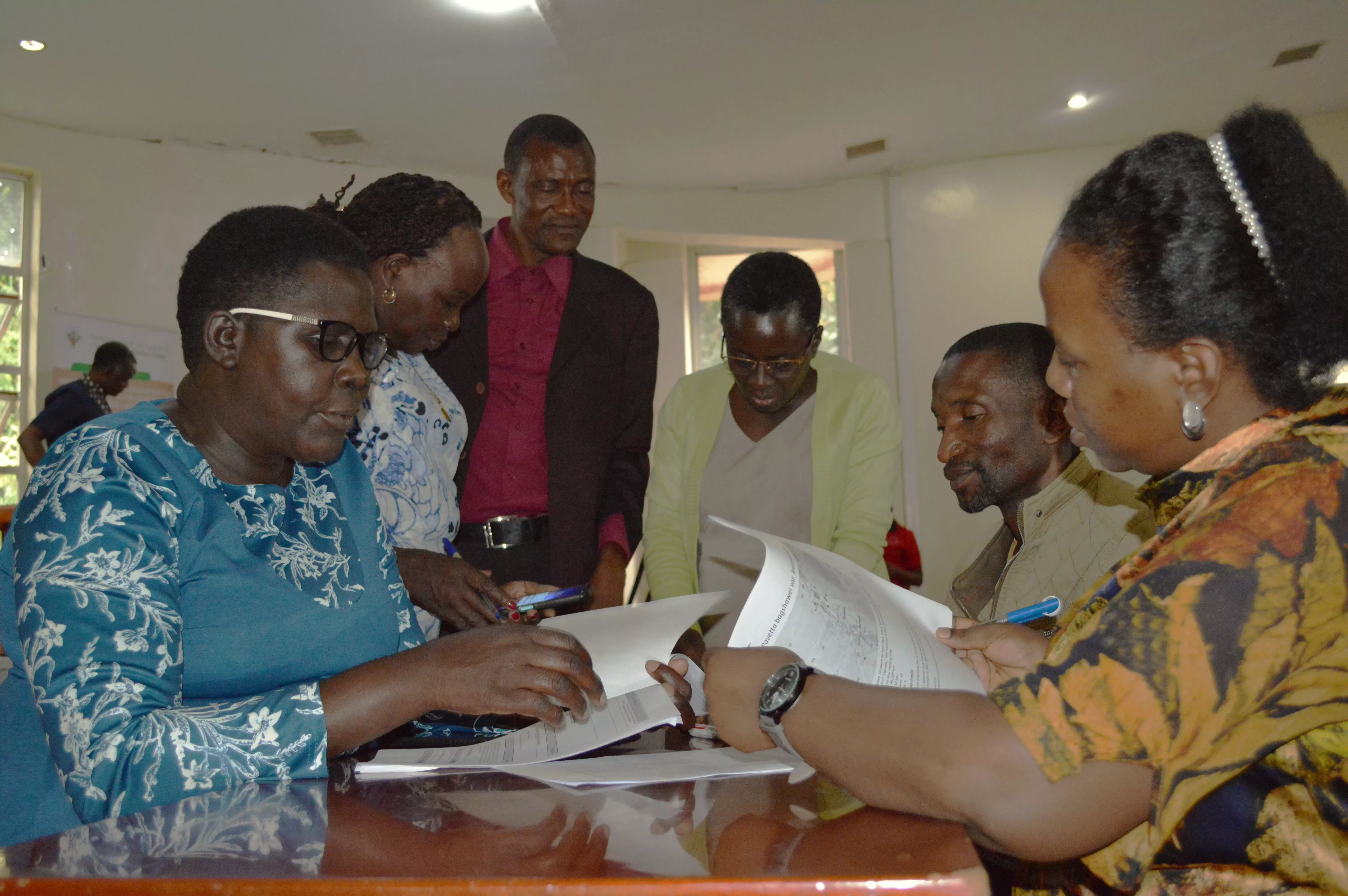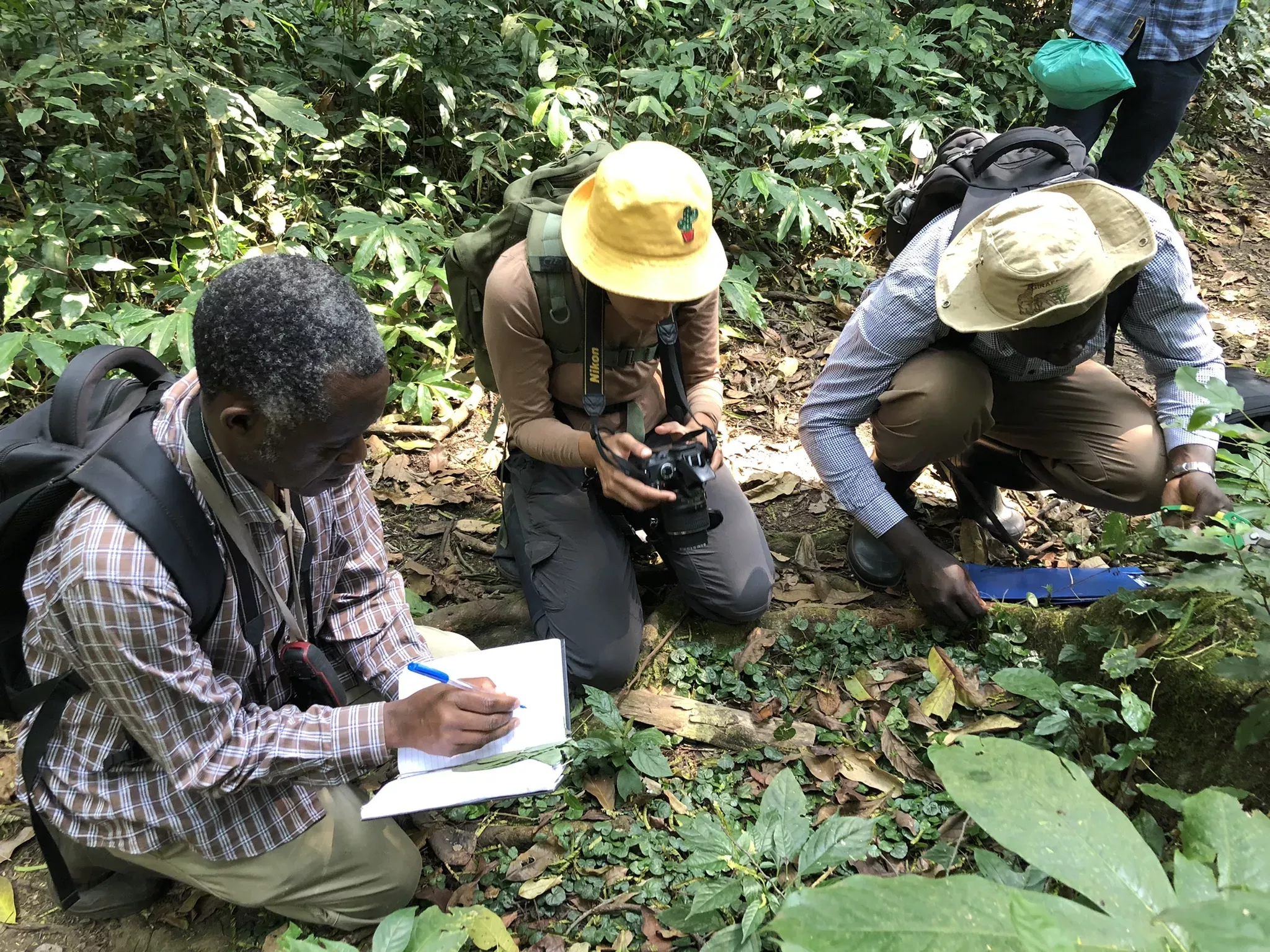27 May 2023
Uganda’s botanical riches: a partnership in conservation
On the quest to preserve Uganda’s most precious areas of plant and fungal biodiversity, experts from Uganda and the UK unite to share experiences and develop ideas.

Uganda has a rich and varied flora, from cycads and aloes known only from a single site globally to economically important species like wild coffee and the shea butter tree. But many of these species are threatened with extinction.
To help address the threats to Uganda’s flora and to drive forward conservation of plant species, a joint workshop was held at Makerere University between the “Uganda Tropical Important Plant Areas (TIPAs)” project team from Makerere University and Royal Botanic Gardens, Kew and the “Tree Conservation and Forest Restoration in Uganda” project team from Tooro Botanical Gardens and Botanic Gardens Conservation International (BGCI).
This partnership of two separate projects has great potential for achieving targeted and effective conservation of Uganda’s most important sites for plant diversity.
The Uganda TIPAs project is seeking to identify Important Plant Areas (defined as the most important places in the world for wild plant and fungal diversity that can be protected and managed as specific sites) throughout Uganda, with the ultimate aim of seeing the plants at these sites conserved.
Four of these IPAs have been selected by Tooro Botanical Gardens and BGCI team, for the “Tree Conservation and Forest Restoration in Uganda” project. All four of these sites are rich in rare and threatened species and this work is an important step in securing conservation and restoration action for each of them.

This workshop was an opportunity for us to invite experts and key stakeholders to share their knowledge with the two projects, helping us to identify and document IPAs and develop targeted conservation and restoration plans for a subset of these sites.
These insights are invaluable, particularly in identifying the root causes of threats to plant species and habitats. For instance, we found that around one IPA, Kasyoha-Kitomi, the establishment of large-scale, commercial plantations has reduced the land available to local farmers who then turn to protected areas in search of land for supporting their livelihoods.
Within this workshop we also provided training on the assessment techniques that are essential for identifying IPAs, and equipped participants with background knowledge on species extinction risk, using the IUCN Red List of Threatened species. This means that we are providing our experts with the knowledge needed to critically engage with conservation assessments and help us develop better ones. It also means that practitioners can apply the conservation knowledge gained through the workshop to their work outside this project.

While the workshop was hit by a few surprises (including a last-minute change of facilitator after a positive COVID-19 test, an impromptu television interview over lunch, and a couple of power cuts!), overall it was a great success and a wonderful opportunity to meet, in-person, many people who care greatly about protecting plants in Uganda.
Using the knowledge generated within the workshop, Makerere University and Kew will be working together to identify the IPAs of Uganda, and continuing to collaborate with workshop participants to do so. Tooro Botanical Gardens and BGCI will, meanwhile, be developing conservation action plans for the four IPAs they are focused on, including a period of consultation and promotion of potential conservation strategies with key stakeholders.
Establishing Important Plant Areas means expanding our knowledge of the plants that inhabits these unique sites. In February 2023 we journeyed across five unique sites within Uganda to establish an understanding of the extraordinary biodiversity found within. You can read about our experience in part one of this story.

Acknowledgements
We would like to thank our funders the players of the People’s Postcode Lottery, the Woodspring Trust and the P.F. Charitable Trust




